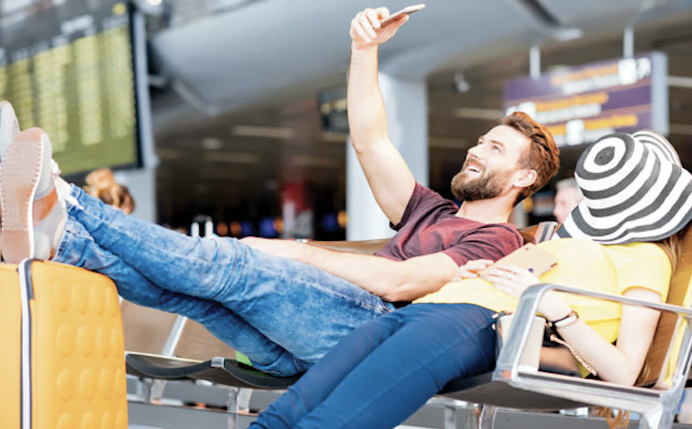A new study from SITA, the leading IT provider to the air transport industry, found that by 2025, 68 percent of passengers will be using their smartphones to navigate their journey, with airports, carriers and other stakeholders having to add new technology to meet their changing preferences.
The report, 2025: Air Travel for a Digital Age, predicts that by the middle of the next decade, more than two-thirds of all air travelers will be millennials and Gen Z who will expecting to manage air travel in much the same way they do every other aspect of their daily lives – using their mobile phones.
“These travelers no longer want an experience that is compartmentalized across airlines, airports, border agencies, or other stakeholders involved in their trip,” says Barbara Dalibard CEO, SITA, in the report. “They expect travel to be seamless, where every step fits neatly with the next, delivered as a single, unified experience. Fundamental to meeting these demands is a requirement for more efficient operations and collaboration between the airlines, airports and other stakeholders responsible for delivering that experience. Without it, we will not be able to deliver the journey digital travelers demand.”
The SITA report found 83 percent of airport and airline IT leaders surveyed believe this demographic shift will be the most important influence on their digital strategy by 2025. The biggest change will be passengers demanding more autonomy as they travel, with self-service kiosks and mobile tools taking the place of human customer service representatives and in some cases concession workers and other airport employees.
SITA notes that 54.5 percent already use technology to check-in, either via a website, their mobile, kiosks or automatic check-in, adding the number of passengers who chose to sail through passport control using automated gates or kiosks doubled to 44% in 2018. More importantly satisfaction levels are higher among tech-using passengers at every step of the journey, with a marked rise at dwell time, onboard and bag collection.
“Today’s passengers are happier when they can use technology to process their way through airport ID checks and to consume and pay for services,” the report says. “At passport control, those travelers who sailed through self-scanning gates reported the greatest satisfaction – 3.85% higher than those who had their ID checked by a human agent.”
For airports the changes could yield higher per-traveler revenues, as tech-enabled passengers are more willing to make use of extra services at the airport through apps such as Inflyter, which enables travelers to order ahead for duty-free products, and Grab, which provide seamless airport food ordering, SITA notes.
“By 2025, we foresee passengers using their mobile phones to plan their trip in a more integrated way – from transport to the airport and services at the airport, onboard and at their destination,” the report says. “It will be vital to drive innovation throughout the passenger journey, so that no stage becomes a weak link in the chain. The key technologies that will shape future tools and services available to passengers include cloud services, 5G, biometrics and secure travel tokens, automation, chatbots and AI. In many instances, a combination of these technologies is likely to deliver the greatest benefits.”






